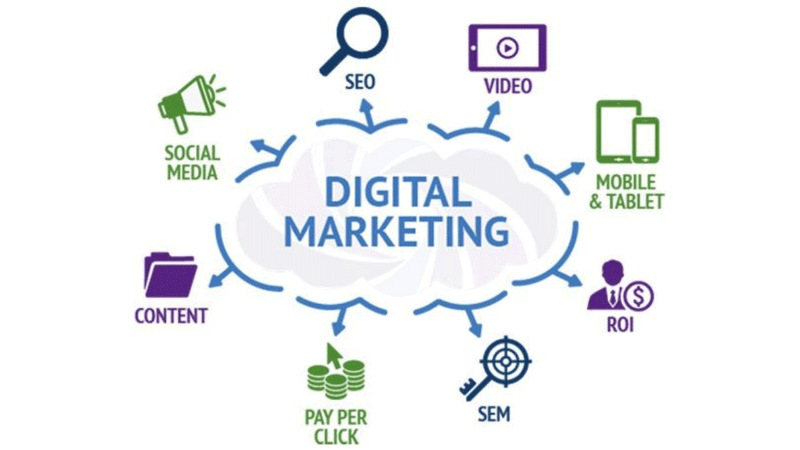Enhance Individual Experience and Drive Web Traffic With Responsive Web Design
In today's electronic landscape, where users are accessing web sites from a wide variety of gadgets, responsive web design has ended up being much more essential than ever. With its ability to adapt and effortlessly adjust to different screen dimensions, receptive design not only enhances individual experience yet likewise drives website traffic to your web site.
Why Receptive Website Design Matters
Receptive web style is a necessary element of modern internet advancement due to its capability to make sure optimal individual experience across numerous devices and screen sizes. With the spreading of mobile phones, tablets, and various other mobile phones, it has ended up being critical for web sites to adapt and provide smooth performance despite the tool being utilized.
The key reason responsive internet style issues is that it permits users to have a pleasurable and consistent searching experience, despite the gadget they are using. A receptive website automatically changes its layout, design, and web content components to fit the screen dimension and resolution of the gadget, guaranteeing that customers can conveniently communicate and navigate with the website with no aggravation or disappointment.
Moreover, responsive web design also plays a significant role in seo (SEO) Look engines, such as Google, prioritize sites that are responsive and mobile-friendly in their search outcomes. By incorporating receptive layout principles, internet sites can improve their exposure and ranking, causing raised organic web traffic and possible clients.

Boosting User Interaction With Responsive Style
Maximizing customer interaction is a crucial goal of responsive layout, as it ensures that users can conveniently access and engage with website content on any type of gadget. With the increasing use mobile phones and tablet computers, it is vital for internet sites to adapt to different display sizes and resolutions. Receptive style allows web sites to instantly readjust their layout and material to give a seamless customer experience across tools.
Among the major ways receptive style boosts customer involvement is by reducing lots times. With a responsive internet site, users do not have to await different mobile versions to tons, resulting in faster accessibility to material. This enhanced rate brings about greater user fulfillment and motivates them to invest even more time on the website.
Furthermore, responsive layout improves individual engagement by boosting navigation and interface (The Ad Firm seo). When a site is made responsively, buttons and menus are enhanced for touch communications, making it less complicated for customers to browse and interact with the website on their smart phones. This straightforward and user-friendly experience keeps individuals involved and urges them to discover even more of the website
Additionally, receptive style allows for better content visibility and readability. By adapting the layout and font dimensions to various tools, responsive web sites ensure that customers can quickly recognize the material and read. This boosts individual interaction by decreasing the requirement for scrolling or zooming to check out the message.
Boosting Web Site Traffic With Responsive Web Layout
With the expanding appeal of mobile devices, having a web site that is receptive to different screen sizes and resolutions is necessary for driving increased web traffic. In today's electronic landscape, users are accessing internet sites from a selection of tools such as mobile phones, tablets, and home computer. Each of these gadgets has various screen dimensions and resolutions, and if your website is not developed to adapt to these variants, it can lead to an inadequate user experience and a loss of potential website traffic.
Responsive web design ensures that your site looks and operates efficiently across all tools. By utilizing flexible grids, fluid pictures, and media questions, receptive design enables your internet site to automatically adjust its material, format, and navigating to fit any type of screen dimension. This implies that customers will certainly have a smooth browsing experience no matter whether they are using a tiny smart device or a big desktop computer computer system.
Crucial Element of Effective Responsive Design
Efficient responsive design includes several crucial elements that make certain a smooth customer experience across different tools. One of these aspects is flexible grids and formats. By using relative units like portions instead of repaired devices like pixels, designers can create website webdesign designs that scale and adjust to fit different screen dimensions. This enables web content to be displayed in a understandable and aesthetically enticing fashion on any kind of tool.
An additional important component is media questions. These enable designers to use various styles and formats based upon the characteristics of the user's gadget, such as screen size and positioning. By using media queries, designers can maximize the discussion of material for each device, ensuring that it is legible and conveniently accessible.
Responsive photos are additionally essential in reliable receptive style. Pictures that are as well huge can decrease page lots times on smart phones, while photos that are also small might appear pixelated on larger displays. By utilizing methods such as responsive image resizing and careless loading, developers can make sure that images are suitably sized and optimized for each gadget.
Lastly, reliable receptive layout includes a mobile-first method. This implies creating and prioritizing material for mobile phones first, and afterwards expanding and boosting the style for bigger displays. This method makes sure that the most important web content is easily accessible on smaller screens, while still giving an abundant experience on larger tools.
Ideal Practices for Executing Receptive Website Design
Carrying out receptive web design needs cautious consideration of numerous finest methods to make certain an ideal customer experience across different gadgets. When implementing receptive internet design., here are some vital best techniques to comply with.
Firstly, it is critical to focus on mobile individuals. With the enhancing dominance of smart phones, developing for mobile-first has actually come to be necessary. Beginning deliberately for smaller displays and then gradually boost the layout for larger displays.

Another crucial finest method is to optimize pictures for various screen resolutions. Huge pictures can reduce the packing time of your website, especially on mobile gadgets with slower connections. Use responsive pictures that can be resized based on the gadget's display resolution to improve performance.
In addition, test your website medical web design on various tools and screen dimensions to make certain a consistent and smooth experience. There are various testing devices offered that can assist you determine any concerns and make necessary modifications.
Lastly, focus on usability and ease of access. Make sure that your website is simple to browse, with concise and clear content. Make certain that your site is obtainable to individuals with impairments and follows accessibility guidelines.
Conclusion
In final thought, responsive web layout plays a vital function in improving user experience and driving traffic to sites. By adopting responsive layout principles, sites can ensure optimum watching experiences across various gadgets, leading to raised customer interaction.
Maximizing individual interaction is a key a knockout post objective of receptive design, as it makes sure that individuals can easily access and engage with site web content on any kind of device. Receptive design allows internet sites to immediately change their design and content to give a seamless user experience throughout devices.
In addition, responsive design enhances individual involvement by improving navigation and user interface.Receptive images are additionally important in reliable receptive layout. By taking on responsive style concepts, web sites can make sure optimum checking out experiences throughout different devices, leading to raised individual involvement.